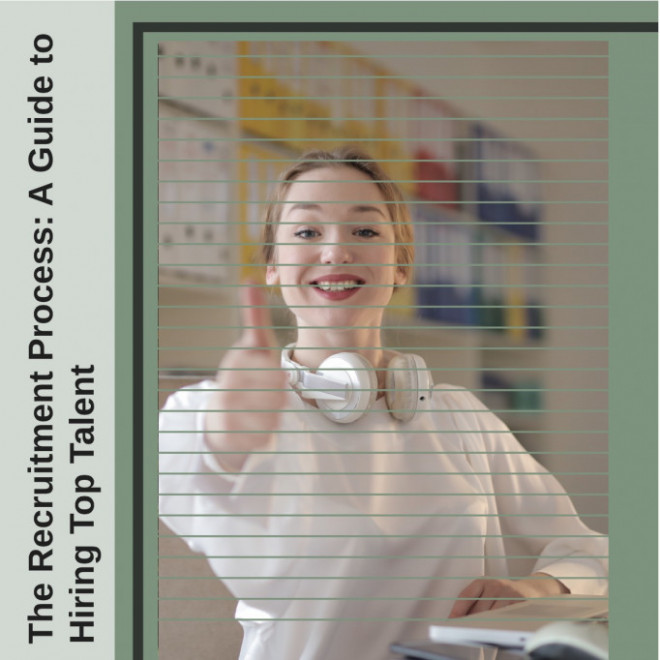Сompanies should invest in updating their recruitment processes. Below are 5 recruitment trends that will allow you to gain an advantage over your competition and provide the best people for your business.
Why is investing in the latest recruitment trends so important?
The only recruitment trend that remains unchanged and is the basis of all recruitment processes is candidate experience. Currently, it is the candidates who create the recruitment process, and their experiences directly influence decisions on accepting or rejecting an offer and your company.
The main factors you should focus on when improving your candidate experience:
-
Shortening the time needed for employment
-
Improving communication with candidates
-
Promoting your employer branding, experience and development in the company
-
Adapting to the needs and availability of candidates
All the above-mentioned recruitment trends are extremely important in order to provide candidates with the best experience, improve the recruitment process as well as faster and effective employment.
1. Artificial Intelligence (AI) will replace the administrator in recruiting
It is starting to become more and more accessible to small businesses as well, thus enabling them to reduce the time it takes to scan CVs and recruit the best candidates, in the same way that larger organizations do. The most popular myth about artificial intelligence (AI) is the one that claims that it automatically deletes CVs that do not meet the criteria. However, this is not true, and it also does not apply to most tools that use artificial intelligence. The only thing that changes is the order in which the candidates are ranked. The control over the entire process is still in your hands
2. Employment as a soft skill
Both artificial intelligence (AI) and automation will contribute to the transformation of traditional roles and the acquisition of hard skills. As the Harvard Business Review admits, soft skills and emotional competences will be most beneficial for candidates in the acquisition of artificial intelligence (AI) and automation of activities such as:
-
Focus on results
-
Relationship orientation
-
Following and abiding by the rules
-
Innovative but destructive thinking
-
Pragmatism
It is important for companies to look at their company and evaluate in which areas it would be worth applying automation and which trends will affect the roles they plan to hire. Once this is established, the skills that will be required to fulfill the role should be described and presented during the various stages of the recruitment process. Tools such as job interview grading cards, game-based assignments and video interviews will allow hiring managers to evaluate candidates based on their hard and soft skills, and to obtain information on their availability, future development plans and adjustments. to changes and the latest trends in the company.
As the labor market tightens, you need to make sure that you provide your employees with continuous development as well as the benefits of working for your company. By hiring a candidate with their soft skills can prove to be a success for your company in the long run and result in a much higher ratio of employee retention.
3. Use automation to allow your HR team to focus on employee retention
Certain trends in the recruitment industry are key to retaining and attracting employees. In 2020, these include: well-being, remote work, company culture, science and development.
Therefore, automation is starting to be a key activity that enables the hiring team to focus on its employee retention strategy. Talent acquisition activities will be fully automated in the next decade. These types of time-consuming tasks include arranging candidates for job interviews, sending multiple emails, administrative tasks related to recruiting, and the hiring manager's opinion. Automation of the above-mentioned processes may also contribute to a significant improvement of the candidate experience.
4. Employer Brand as a communication center with candidates
The current and upcoming generation of jobs are not satisfied with 9 am-5pm. They are looking for companies whose mission and values are in line with their personal values. They want to know that their actions contribute to a "greater goal." Nowadays, companies have the opportunity to build and promote their employer branding and workplace in a way that is both ethical and attractive to their community.
5. Recruitment via social media
As we mentioned before, soft skills are becoming increasingly necessary and career development is a key element to retaining employees. So in order to recruit new employees, the hiring team should first take care of its current employees. The human resources data that companies have at their disposal can therefore be helpful in this type of analysis.
HR departments are now able to register beneficial data about their current employees. These include education, soft skills, career development, goals, learning and development. Thanks to this type of data, the company will easily be able to match new positions to the preferences of its current employees. However, there are many factors that need to be considered. These are such as filling a position that may then be lost or acquiring hard skills in an employee to meet the requirements of a new role and position. In addition to increasing employee engagement and increasing employee retention rate, the hiring team should count the costs related to training in new skills and finances related to the application of the new model and trend in hiring.
Make sure you build the best teams and hiring the best candidates for your business. Find out how we can help you with this!


 Posted on Aug 7, 2020 by Anna
Posted on Aug 7, 2020 by Anna


